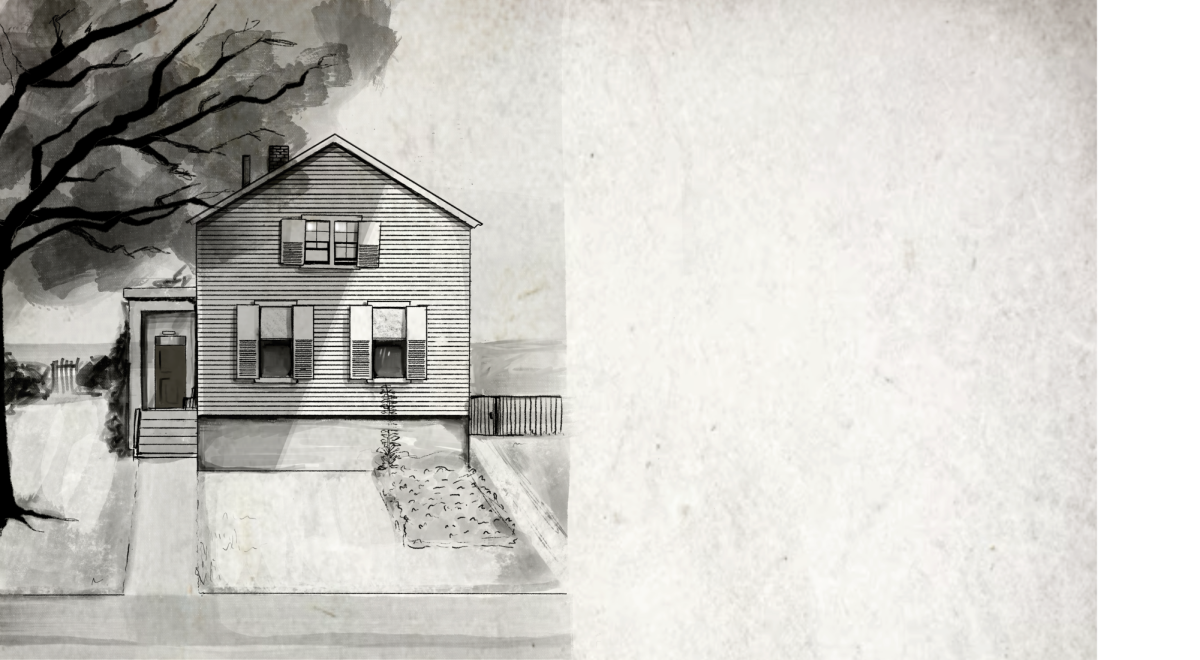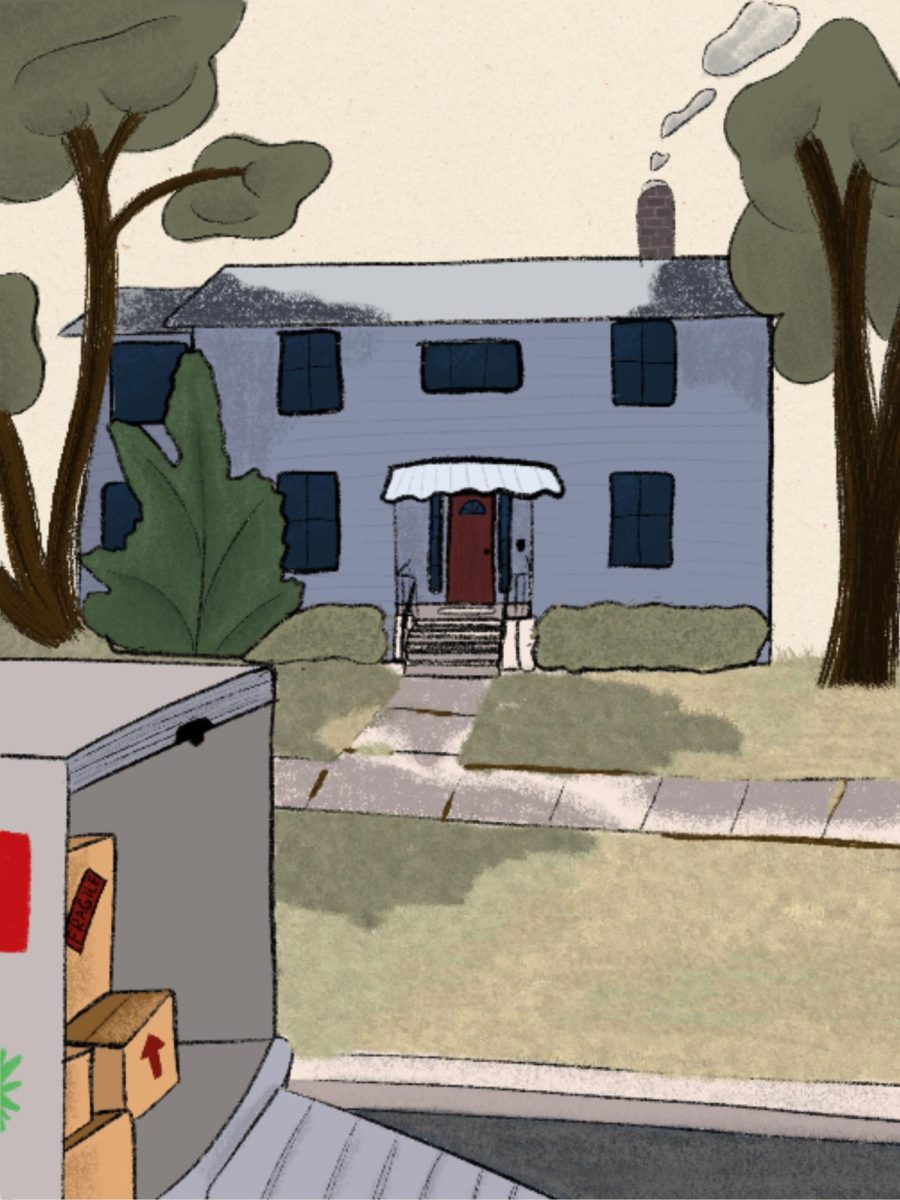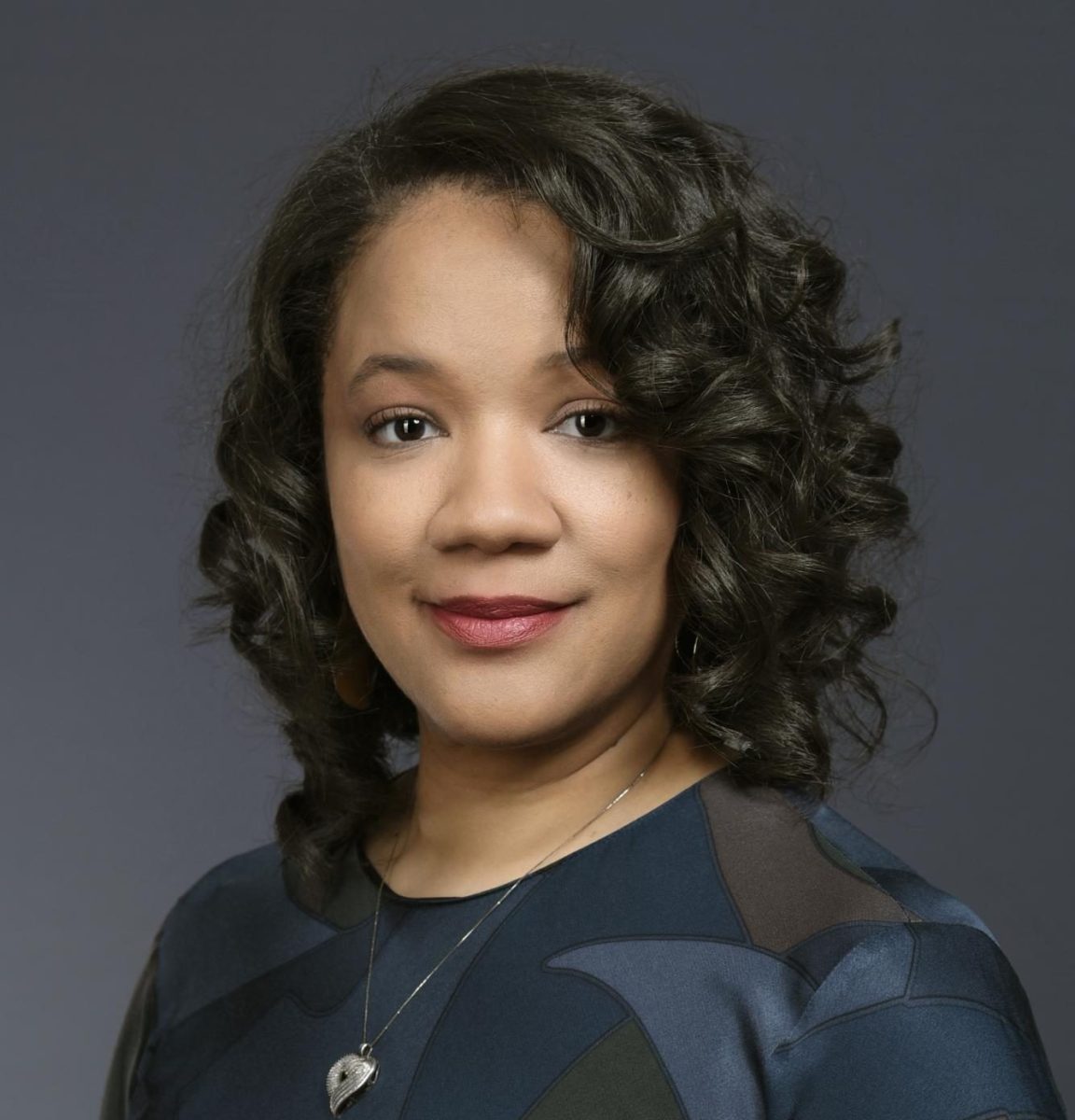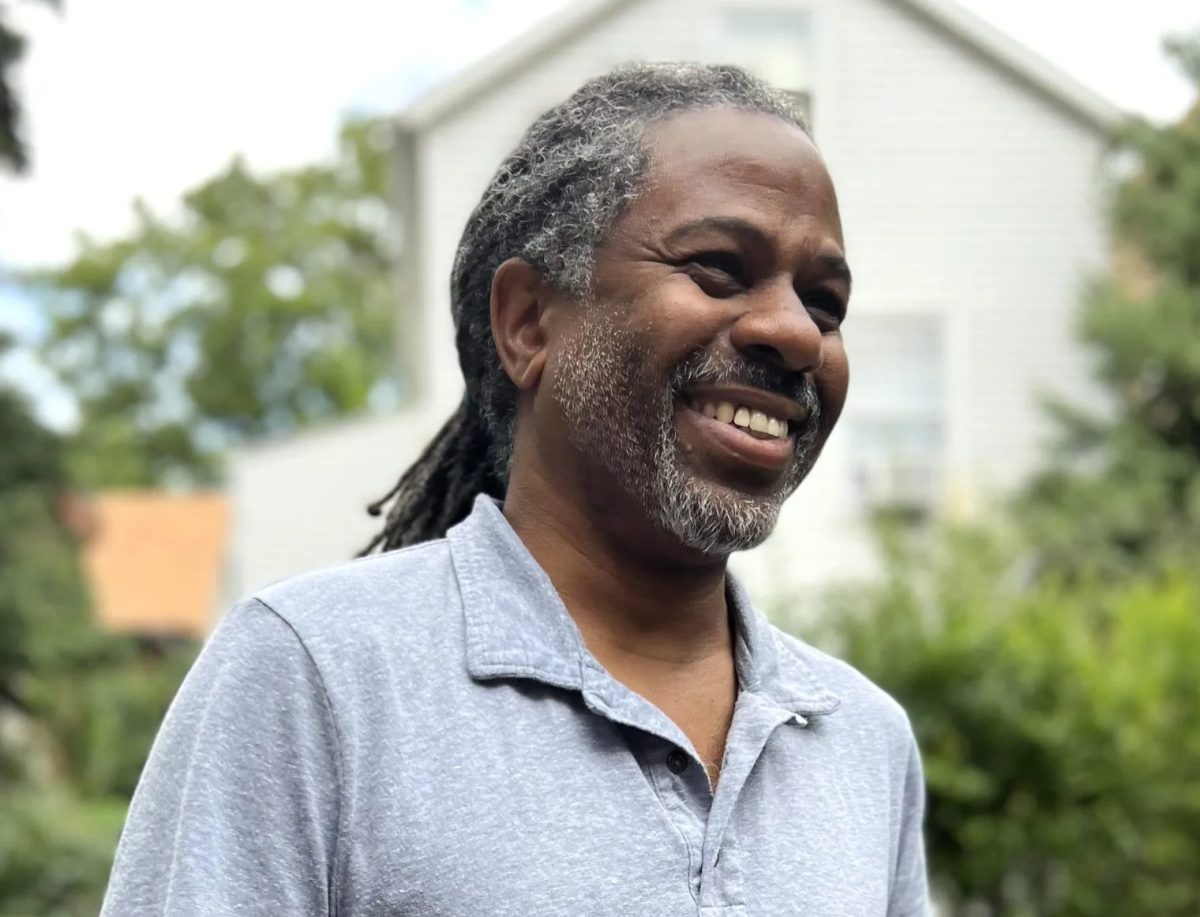When Evanston announced passage of its historic reparations program in Mar. 2021, the national media was quick to latch on.
“Evanston is the first U.S. city to issue slavery reparations. Experts say it’s a noble start,” a NBC News article read from the day after the council meeting.
The issue proved to be a fire-starter in the media, with some opinion columnists from across the country praising the City of Evanston and others crying foul.
“Evanston’s grants to Black homeowners aren’t enough. But they are reparations,” “Reparations Can — And Should — Take Many Forms, Says Human Rights Researcher,” “I’ve never been prouder of Evanston, where reparations are now becoming reality,” commended opinion pieces in the Washington Post, NPR and the Chicago Sun Times respectively published shortly after the council’s decision.
Naturally, a spotlight fixated on the North Shore suburb.
“Evanston, Illinois, is a quiet place in the middle of an unusual experiment,” wrote BBC News in an Oct. 2022 article. “In this university town just north of Chicago, a sheen of affluence glints through the windows of solid brick buildings downtown, while rainbow flags and ‘Black Lives Matter’ placards dot what seems like every other suburban lawn.”
The historic initiative garnered judgment from all corners of the country.
“Illinois city’s reparations plan was heralded – but locals say it’s a cautionary tale,” “True reparations aren’t limited to money,” “The country’s first municipal reparations program is off to a rocky start,” “Evanston’s Reparations Plan Is an Insult to Public Housing Kids Like Me,” voiced columnists in articles from The Guardian, the Center for Public Integrity, NBC News and Newsweek.
The story appeared everywhere from newspapers to cable.
“It’s not real reparations unless you give the descendants of slavery actual money and let them choose how they want to spend it, as if they’re adults,” said Trevor Noah, then-host of The Daily Show in an episode that aired on Mar. 23, 2021. “But, still, congratulations to the Black people of Evanston, and congratulations to all the white people who are gonna find a way to game the system.”
Simultaneously, concurrent sounds of praise and criticism reverberated across the city.
“For a town of our size to lead the country on an issue of this level of moral significance made people [incredibly] proud. It’s also a massively emotional issue and that resulted in a lot of public input and a lot of really robust [and difficult] discussions,” said Evanston Mayor Daniel Biss.
As the City of Evanston moved forward with its reparations resolution, the complexities of pioneering the initiative became increasingly apparent.
Some believe that through its collective efforts, Evanston’s city officials and community leaders acknowledged localized wounds and transformed its vision into a tangible reality.
“Evanston inspired legislators [and] activists to say, ‘This is possible.’ It’s possible on the local level. You don’t have to just look [to] the federal level, which a lot of people thought would never happen,” said Kamm Howard, director of Reparations United and former National Co-Chair of the National Coalition of Blacks for Reparations in America (N’COBRA).
While many celebrated the city’s efforts and regarded it as a step in the right direction, others strongly opposed the program and felt it would not repair any of the centuries-long damage inflicted on Evanston’s Black community.
“I am a fifth-generation Evanstonian whose family has withstood systemic racism for more than 100 years. I agree that reparations for Black Evanstonians and Black Americans are long overdue, and fully support them — for my own family and countless families across this country,” wrote former Ninth Ward Alderwoman and sole city council member who voted against the reparations program Cicely Fleming in a Chicago Tribune Op-Ed published on Mar. 26, 2021. “But make no mistake. What was lauded recently across the nation as a ‘landmark’ reparations program approved by the Evanston City Council was nothing more than a housing plan dressed up as reparations.”
Fleming’s skepticism seized the attention of the national media. She was interviewed on NPR, CBS and TMZ, with TMZ publishing the headline, “CITY REPARATIONS NOT WHAT THEY SEEM… We Have to Do Better!!!” Fox News weighed in as well, highlighting the dissension with the headline, “Chicago suburb set to pay reparations, but not all on board.”
Although Fleming was the lone vote against the ordinance, many Evanston residents resonated with her attitudes towards the city’s program.
“Although there’s been success through civil rights legislation and other forms of legislation that have attempted to eliminate and downplay some of the barriers that exist through discrimination, we’re still fighting from the deficit that occurred as a result of not being made whole after the period of enslavement that Black people went through,” remarked Kevin Brown, a founding member of Evanston Rejects Racist Reparations. “The offer of repair that Evanston has put on the table does not do justice to the actual harm that was done to Black people in this community. [The city’s] reparations resolution is more aspirational, rather than substantive.”
An important voice in the growing reparations movement, Evanston Rejects Racist Reparations, a now-inactive Facebook group that grew to encompass nearly 800 members, argued that the city’s approach to reparations was insufficient and flawed.
“[Robin Rue Simmons] started [holding] public meetings in 2019… Essentially, what she told us in those very first meetings was ‘Reparations means cash money in my pocket.’ And I remember she stuck her hands in her pocket and giggled… So we were all excited. But within two or three months, she changed. We know that somebody got to her and told her, ‘Wait a minute, you need to [create] a program that is just going to be a housing program,’” said Rose Cannon, one of the group’s organizers. Cannon’s speculation as to what led Rue Simmons to shift from cash payments to a housing program exemplified a broader frustration that she and others in the city were feeling.
The individuals who spearheaded Evanston Rejects Racist Reparations—and those who rallied behind the group—suggested that the “paltry sum” is not synonymous with true reparations.
“Nothing ever gets done. We don’t ever get anything. This $25,000 that they’re giving people now, it’s not enough,” Cannon said.
The online group released their first statement in Mar. 2021, which read, “Reparations are owed, in a form and matter to be determined by all Black people in Evanston, not by a ‘self-appointed’ Reparations Stakeholder Authority serving as a patriarchal agent for the injured group.”
Amidst all of the noise, Evanston Rejects Racist Reparations intended to serve as a repository of information and a voice for the voiceless, holding informational Zoom sessions for community members to discuss their thoughts on the city’s plan.
“One of my first interactions with a resident talking about the reparations program was when I had gone into a local, small-owned Black business. She said, ‘I’m a lifelong Evanston resident, and this is a program that would apply to me… [but] my house is entirely paid off, I have no desire to renovate my home and I don’t want to buy a new home, so I’d love to use this money in a different way.’ She envisioned putting that money towards [her] small business…but [she] wouldn’t have that freedom. [She] had felt that, throughout this process, concerns about the program had fallen on deaf ears,” Sebastian Nalls, one of the leaders of Evanston Rejects Racist Reparations, said. “As I continually had conversations with folks, especially Fifth Ward residents, these were the types of sentiments that I was hearing.”
Long-time Evanston resident Beverley Mason, who is Black, speaks to this fixture.
“My [ideal] reparations deal with something that is more tangible and meaningful. Reparations to me is a forgiveness of the injustice, and you can’t put a dollar amount on that. [This country] has taken away my culture and taken away who I am. [True reparations] acknowledges the sins of America,” Mason said. “I want more than $25,000. $25,000 is nothing to me. I had to pay $52,000 to repair my front and back porch in the year 2000. Therefore, I did not include myself in [the city’s] reparations, because I would have tainted it, and I would have spoken [out about] how I feel, and it would not have gone through. So I stayed away.”
Mason’s perspective that the program didn’t go far enough to amount to true reparations highlighted a reality Brown raises.
“The number of Evanston residents that are actually getting any kind of benefit is so small that it’s not making any kind of substantive difference,” Brown said.
National headlines mirrored local sentiment.
“A Chicago suburb promised Black residents reparations. Few have been paid,” a Washington Post’s article read from Jan. 9, 2023.
Some Evanstonians have even alluded to the possibility of a rigged selection process.
“People are disgruntled that only a select few have been chosen,” Cannon said. “We think [the bingo pool] was set to have certain people. [Rue Simmons] knew each of the first 16 people that were chosen, and everybody in the community knew that she knew them.”
While some organizers of the Facebook group now commend the city’s bold pursuit, many view local initiatives as a roadblock that will consequently hinder lasting progress, jeopardize the national movement and perpetuate a disingenuous understanding of true reparative justice.
“Residents [had] concerns with the program that weren’t getting answered or addressed, and [I felt] that if we weren’t going to create a fully fleshed out plan, we shouldn’t move forward with it, because [it] is setting us up for failure,” Nalls said. “[There] is a nationwide lens on Evanston, so we have to get it right, and if we aren’t getting it right, then we need to take a step back. [Also], any mistakes that we make on the side of the city can result in litigation and threaten the existence of the reparations plan altogether.”
Others affirmed that local remedies will pave the way for national initiatives and accelerate the broader conversation around reparations.
“This group [against local reparations] is small and loud all around the country and [with] reference in Evanston, they’re able to magnify and amplify [the argument] that Evanston’s [efforts] are not reparations, and [it is] harming the federal effort. When they say it is not reparations, they have a limited view of what reparations are,” Howard said. “I’ve indicated that all [of] these city efforts demonstrate the political will on behalf of Democratic Party voters around the country. It’s not harmful; it is helping.”
Despite the pushback she has faced, former Fifth Ward councilmember Robin Rue Simmons, the driving force behind the city’s reparations effort, continues to convey the message that in the complex realm of reparations, initiating a starting point is crucial.
“A very vocal few are against the forms of reparations, and I’m not mad at them. I think their approach could be [slightly] more productive, but we all have our opinions about what forms of reparations we want to see. As Black people, we’ve all been harmed in different ways. We’ve had impact in some areas more than others,” Rue Simmons said. “I think the wrong approach is to look at either this or either that. [Instead], it is how do we get more comprehensive redress? How do we do housing and later do cash? The argument [is] a false debate because we never intended to only do a housing centered reparations initiative. We had to grow and build and get legal memos and the legal stamp of approval to get to cash [payments].
When you acknowledge a harm to a specific injured community, apologize for that harm, commit to redressing it in the name of reparations, program it, fund it, and disperse it to that community only, it is, in fact, reparations. It is not equity. It is not any form of ordinary public policy. It’s not affirmative action. It is reparations.”
Rue Simmons’ attitudes were reflected on a multitude of news outlets across the nation.
“Robin Rue Simmons: It must start. That’s how you seek reparations. You start,” wrote MSNBC.
While many resonate with Rue Simmons’ argument that Evanston’s reparations resolution is the start to continued action, others hope to see the city adopt a more comprehensive reparations framework that encompasses various dimensions.
“When our country chooses to act, it’s not just the start. The tokenism that is spoken of in Evanston as being ‘just the start’ is not genuine and rather insulting, because we have examples in our country, where through legislation and through other acts of Congress, that when we want to to repair a problem we can find the resources to fund it,” Brown shared.
As a result of delayed distribution of cash payments, some of the program’s elderly qualifying members were not able to receive compensation, passing away before the program could aid them.
“‘Too little, too late’: Black residents disillusioned by pace of Evanston reparations program,” wrote the Daily Northwestern, while the Washington Examiner chose to go with “Evanston residents blast reparations committee for ‘showboating’ and slow payouts.”
On Mar. 27, 2023, two years after the city guaranteed funding for reparations for a number of its Black residents, the initiative broadened its scope, adding a real estate transfer tax to its revenue stream and allowing for cash payouts.
“Evanston City Council votes in favor of expanding its reparations program to repair housing discrimination,” a CNN article read from a day after.
In expanding Evanston’s resolution, community leaders sought to expedite the process of grant distribution.
“[As lawyers], our job is basically to tell you, ‘No. We can’t do this. The law doesn’t allow us to do this.’ So I had to adjust my way of thinking and figure out how to get to ‘Yes.’ And that’s how I finished my career in Evanston, in terms of figuring out how to do things and then laying it out and [outlining] a path. Whether the leaders and legislators chose to walk that path is totally different, but I think we were able to [achieve] that goal in a bunch of different ways, especially [with the] real estate transfer tax going into the reparations fund,” Cummings said.
In light of the recent amendments to the program, Rue Simmons envisions a positive shift that will bolster public support from the community-at-large.
“To those that were critical of our first form of reparations, I hope that they are satisfied that we have expanded to include cash. I know our recipients have been very satisfied,” Rue Simmons said.
And while this amendment addressed many residents’ skepticism to the city’s initial reparations model, Nalls offers a reminder that the inclusion of direct cash payments was a demand of many of the program’s critics—and those who it impacts most closely—from the very beginning.
“The program has shifted its focus to cash payments. This is something that Evanson Rejects Racist Reparations was in favor [of] from the jump, and it was time after time that city officials would say, ‘No, [cash payments] are not possible. It would result in the program failing. It would result in litigation happening. Residents would be taxed if they were to be given direct cash reparations. That’s why we’re going with this housing program.’ [But] ultimately, [cash payments] are where we arrived anyways… so I see that as a win. But I believe that we could have been at this point sooner if we had just listened to residents from the jump,” Nalls said.
And yet, many applaud Evanston for surpassing expectations and going beyond merely paying lip service to the movement, supplementing its aspirations with meaningful action.
“Nobody predicted that the City of Evanston was actually [going to] put money where their mouth was,” said founder and executive director of Shorefront Legacy Center, an organization that aims to archive the Black history of Chicago’s North Shore, Dino Robinson, who provided historical documentation of the city’s discriminatory policies and practices that provided the basis for Evanston’s reparations program. “As it stands now, [the] initial $10 million has now grown to $20 million. Is it enough? No. Is the housing concept enough? $25,000 per family? No. But you have to start somewhere. And from here, it can only grow. You can choose to sit on the sideline and complain that it’s not enough or you can come to the table, acknowledge that it’s not enough and find ways to make it more. I choose to come to the table to help make it more.
My challenge for the community is that [we] think about setting expectations. Making a change in economic status [is] going to take generations to fix. We’re talking about 400 years of slavery, 100 years of Jim Crow and 60 plus years of police brutality and other discriminatory practices. You cannot change that overnight with one sweeping fee.”
Still, opponents of Evanston’s reparations program argue that local governments are not equipped to adequately address the issues they are attempting to combat; only action by the federal government is appropriate.
“Bringing the Black share of American wealth in line with the Black share of the population would ultimately require an expenditure of $14 trillion. Collectively, the sum of the annual budgets of all state and local governments is $3.1 trillion. Individually, local municipalities such as Evanston generally do not have the resources to pay Black reparations in a meaningful way. But a sufficiently committed federal government—one that found more than $5 trillion in a single year to answer the COVID-19 emergency—can achieve it,” asserted A. Kirsten Mullen and William A. Darity Jr., co-authors of ‘From Here to Equality,’ a guide for reparations in the 21st Century, in an opinion piece from the Washington Post.
In acknowledging the role of states and municipalities in perpetuating discriminatory practices, Mullen and Darity further suggest that it was the federal government who enabled these deep-seated injustices to exist and therefore must bear the weight of providing redress to the Black community.
“Virtually all states and municipalities in the United States share a role in the nation’s sustained record of injustice, but none of them can meet the bill on their own to erase the gulf in Black and white wealth. The federal government established the legal and authority framework that enabled atrocities to occur at the state and local levels,” they added.
Nick Cummings, the former Corporation Council for the City of Evanston, advocates for finding the right approach to presenting these measures on a broader scale, a metaphorical “pill” that the nation must be willing to swallow in order to navigate federal action related to reparations.
“There’s so many [steps] that can be taken on a federal level to mimic or mirror reparations and restorative justice. [But] when you [introduce] reparations and tie it to slavery, it triggers so many people,” Cummings said. “It’s almost like giving a pet medication. You have to hide it in [peanut] butter or something that’s going to be appealing to them and then they’ll take the medicine. I think this is exactly what needs to happen on the national level. We need to figure out something to put the pill in for people to swallow it.”
In Oct. 2022, Northwestern University’s Center for the Study of Diversity and Democracy (CSDD) launched a research collaborative to conduct a comprehensive study on the city’s reparations initiative, in which over 3,500 Evanston residents—from across all nine wards—were interviewed between Feb. and June 2023.
The survey found that, “70 percent of white respondents viewed the reparations program as ‘good public policy’ for the City of Evanston [while] previous surveys nationwide have never recorded more than 20 percent support among white Americans for reparations.”
Biss believes that ongoing community efforts are a testament to Evanston’s enduring commitment towards ideals of inclusion and equity.
“The level of public support for reparations in [Evanston] is totally unlike anything that’s been measured anywhere else in the country, including among white residents. I think that’s a testament to folks’ commitment to figure out a way to right the wrongs of the past,” he said.
As other municipalities contemplate the implementation of similar programs, some believe that the City of Evanston, having garnered overwhelming support from its residents, should serve as a blueprint.
“Creating a public program that has this much support signals that Evanston has done something right. Other municipalities that wish to create reparations programs might be able to use this program as a model in order to implement a similar, successful program,” said Tabitha Bonilla, director of the CSDD program and co-author of the survey.
With this newfound method for establishing reparations locally, some recognize an opportunity for communities to address the racist practices specific to their own histories.
“The Evanston model speaks directly to what you can do at the local level. So in Evanston, they looked at discriminatory housing policies initiated at the local level between 1919 and 1969. The community decided on housing and economic development as priorities for this reparations fund, and therefore, they established a reparative housing program,” explained Dreisen Heath, a researcher at Human Rights Watch, a nonprofit that investigates and advocates for human rights around the world, during an NPR interview from Mar. 26, 2021. “This very model can be used in other cities depending on what specific harms were inflicted on the Black residents in that area.”
Mirroring Evanston’s actions in other municipalities hinges on collective effort, an initiative ‘for the impacted population, by the impacted population.’
“The City of Evanston decided, under Alderman Rue Simmons’ leadership, to proactively make [a] claim for the harmed community in Evanston and decide on its own accord how to address [its flawed history] with input and feedback from the harmed community,” said Bobby Burns, the council member representing the Fifth Ward. “I think it’s really important that when a harm is done, there is redress and compensation, and that the people that are harmed are made whole.”
When the city pledged to atone for its historical wrongs, a ripple was sent across the country, and other state and local governments were inspired to pave their own ways forward, though it was no easy feat.
“There is tremendous value in doing something first. But [at the same time], you’re under a tremendous amount of scrutiny, and there’s a tremendous amount of pressure for you to get it right,” Biss said. “I am glad that Evanston has done the research and [taken the time] to [examine] the harms we’ve done and design a program around that. I think that’s the intellectually honest and right way to do it, and I think that other communities are going to emulate that. So it’s not so much that going first is a burden. Going first is an opportunity to help the movement grow in leaps and bounds.”











